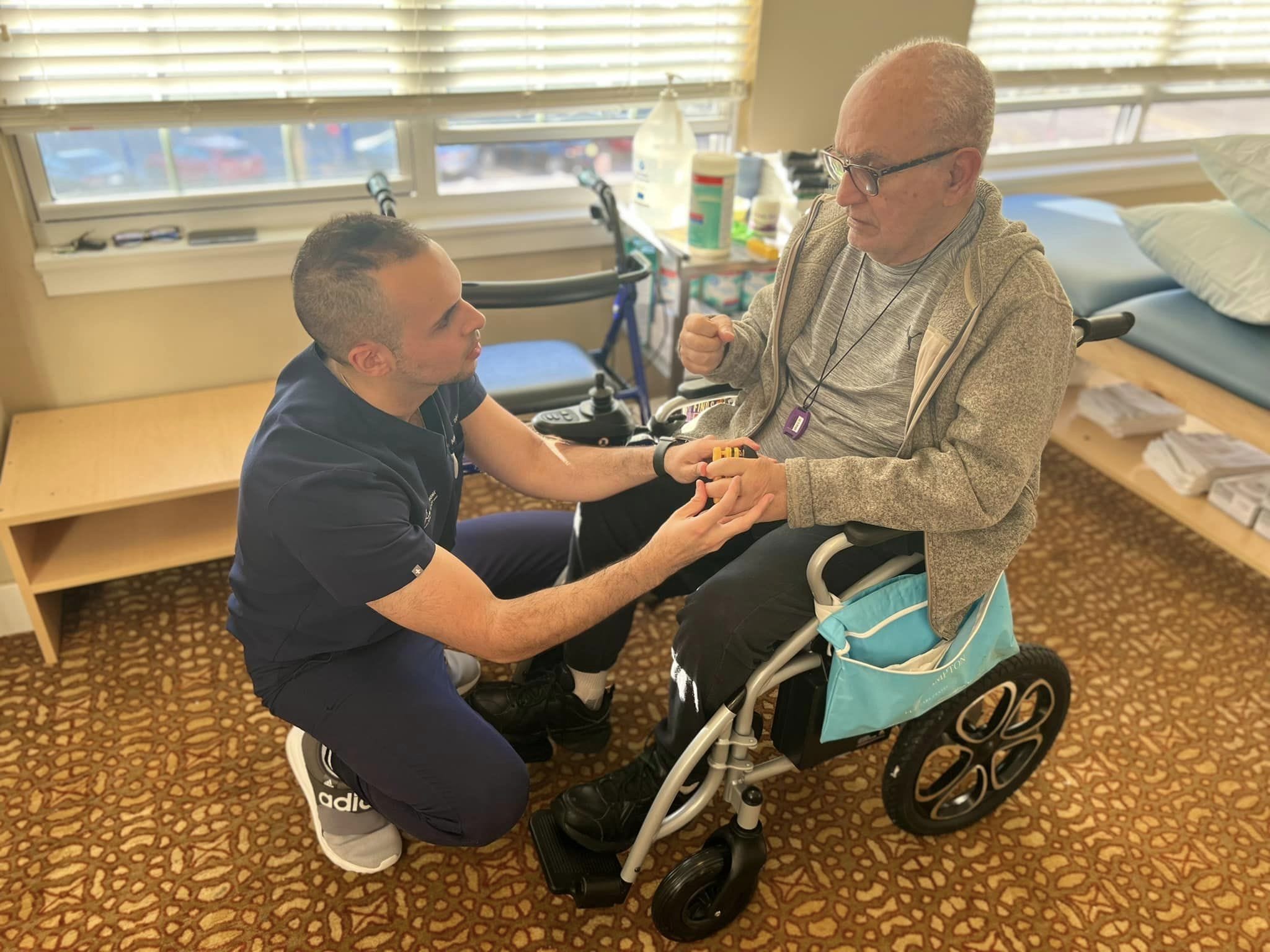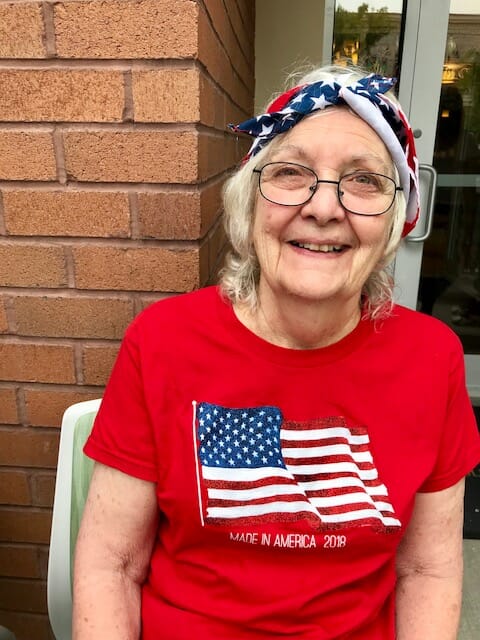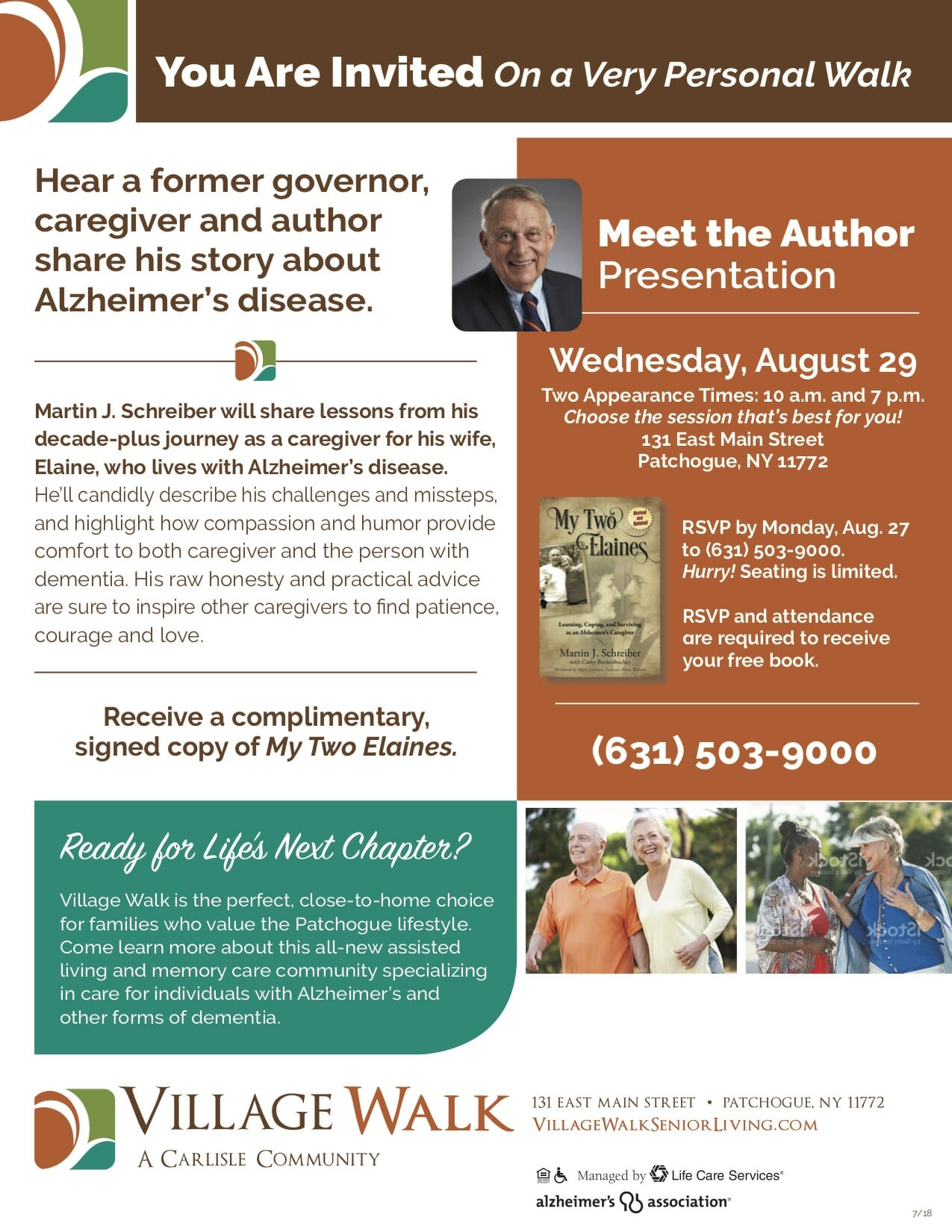Ah, aging gracefully. It’s often easier said than done.
As people age, it’s crucial to work on strength and stability to live long and well. Otherwise, we run the risk of more aches and living a shorter life than expected.
Seniors and families: if you’re looking to maintain the health of your muscles, joints, and bones well into your golden years, we’ve got your back.
Village Walk here. We’re a senior living community that provides seniors with the support they need to age healthy and well. Our staff have decades of experience helping seniors age with grace and vitality.
If you’re wondering about the benefits of physical therapy for seniors at a senior living community, you’ve come to the right place.
To learn more about all things senior physical therapy, read on. Here’s our quick guide to physical therapy for seniors.
What senior physical therapy includes

Physical therapy for seniors is designed to improve the quality of life of older adults. Senior physical therapy takes into account how older adults become less active over time.
Instead of medication, elderly people are increasingly turning to physical therapy to control the symptoms of certain health conditions. At the same time, senior physical therapy helps seniors increase muscle strength, coordination, reaction timing, and tolerance for physical activity.
Physical therapy helps seniors address issues of strength, endurance, mobility, and stability.
Types of physical therapy for seniors

A wide variety of physical therapy types exist. Older adults have the following therapy options available to them:
- Geriatric physical therapy: helps with conditions like arthritis, osteoporosis, cancer, joint replacements, and balance disorders. The goal is to help improve mobility, increase fitness, and decrease pain.
- Orthopedic physical therapy: treats musculoskeletal system-related injuries. Seniors who’ve undergone surgery often use this type of physical therapy. Orthopedic physical therapists address everything from muscles, bones, joints, tendons, ligaments, and more.
- Neurological physical therapy: is a type of physical therapy that addresses neurological conditions that affects the brain and spinal cord. People who live with Alzheimer’s disease, Parkinson’s disease, amyotrophic lateral sclerosis (ALS; previously called Lou Gehrig’s disease), and brain injuries often need neurological physical therapy. Many of the residents in our memory care facility use neurological physical therapists to help improve visual, motor, balance, and muscle-related conditions.
- Cardiopulmonary physical therapy: is a type of physical therapy that helps support people who’ve experienced a heart attack or other cardiovascular or pulmonary condition. This therapy includes exercises that help increase endurance and independence for daily living.
Benefits of physical therapy for seniors

The above physical therapy options help seniors strengthen the mind-body connection. But did you know that senior physical therapy also has many other benefits
Common benefits of physical therapy for seniors include the following:
- Decreased risk of falling
- Decreased risk of injuries
- Decreased pain as a result of chronic health conditions
- Decreased need for prescription drugs
- Increased strength, endurance, balance, and range of motion
- Increased independence and ability to complete ADLs
- Increased tolerance for physical activity
- Increased ability to live with urge and stress urinary incontinence
Table: The many benefits of physical therapy for seniors
| Physical therapy decreases: | Physical therapy increases: |
| 1. Risk of falling 2. Risk of injuries 3. Pain 4. The need for prescription drugs | 1. Strength, endurance, balance, and range of motion 2. Independence 3. Ability to complete activities of daily living (ADLs) 4. Tolerance for physical activity 5. Tolerance for living with conditions like urinary incontinence |
Tips for physical activity, stretches, equipment, and more

Different types of therapy help treat different causes and symptoms of health conditions. Most physical therapy exercises include the following:
- Lower body stretches: lower back, hips, pelvis, hamstrings, hip flexors, calves, and ankles. These exercises are helpful for promoting mobility and reducing tight joints and muscles.
- Lower body strength training: glutes and quads, such as squats, leg lifts, lunges, and more.
- Balance exercises: to help seniors maintain stability while standing, walking, or pivoting directions. Balance exercises include going for walks, practicing specialized exercises, and stability exercises.
- Endurance training: to improve circulation in the lungs and keep the heart healthy. Most endurance training includes low-impact exercises on exercise equipment.
Older adults with health problems like diabetes and heart disease may not feel they need physical therapy. But, it never hurts to seek extra help.
As such, we recommend to our seniors that they ask their primary care doctors about whether physical therapy can help them.
Keeping contact with a primary care physician is key. Staying up to date on specialist doctors’ appointments can help seniors avoid injuries (or surgery, god forbid).
In a word, the right rehabilitation program can help seniors regain control and recover with grace.
A senior moment at Village Walk
Our residents enjoy freedom, functionality, and independence to do the things they love. Dr. Amir Amrami PT, DPT — Owner and CEO of Achieve at Home Physical and Occupational Therapy — provides physical therapy to our residents from the comfort of their homes.
Our renovated Physical Therapy studio invites residents to place their health and wellness first.
Independent living communities offering senior physical therapy

Seniors are turning to physical therapy as another way to manage chronic conditions. Physical therapy for older adults includes strength, mobility, flexibility, balance, and endurance exercises.
The benefits of physical therapy include the opportunity to get around, better manage chronic pain and discomfort, and reduce the risk of falls and injuries. What’s more, seniors can expect most physical therapy regimens to include exercises aimed at improving strength, endurance, and balance in both the upper and lower body.
Our therapists work on the third floor of our assisted living and memory care facility. Whether dealing with chronic fatigue syndrome — or an acute injury or illness — our physical therapists help seniors live the lifestyle that’s best for them.
For more information about physical therapy referrals and recommendations, don’t reach out to us any time. We’re all ears!
Frequently Asked Questions (FAQ) About Physical Therapy for Seniors

How does physical therapy help seniors?
Physical therapy helps seniors address five main areas in their life. These areas include:
- Regaining muscle strength
- Regaining balance and coordination needed to move around
- Regaining overall independence to perform everyday tasks
- Regaining a sense of independence
What physical activities should a senior do (and avoid)?
Remember that range of motion and stamina tends to decrease with age. With that said, seniors can (and should) keep up their physical activity.
Solid exercises for older adults are those that provide strength, stability, and balance for everyday tasks. Standing up from a chair, moving up and down stairs, and walking are all great exercises for seniors.
To avoid injuries, seniors should take their health seriously. They shouldn’t participate in high-impact or heavy strength-training exercises. Seniors can exercise with light resistance to help maintain the health of joints, muscles, and tendons.
Do senior living communities offer physical therapy?
Yes! Many independent senior living communities offer physical therapy as part of their services and amenities. This perk is one of the advantages of assisted living (and memory care) facilities.
These facilities provide services and amenities aimed at the holistic well-being of seniors.
“Village Walk gave her what we couldn’t at home.”

“Mom had her best, last year here. Village Walk gave her what we couldn’t at home. They gave her friends, wonderful recreational activities, and a chance to nap while Dad roamed the facility.
I cannot say enough. From front desk reception (Kathleen and Patricia), aides (Leslie always helped daddy real nice), kitchen staff (Tommy and company), the recreation team (Melissa), and Matthew in maintenance, we appreciate everyone. They treat your family like theirs.
See for yourself! They’re a blessing, and we’re forever grateful.” – Village Walk family member








